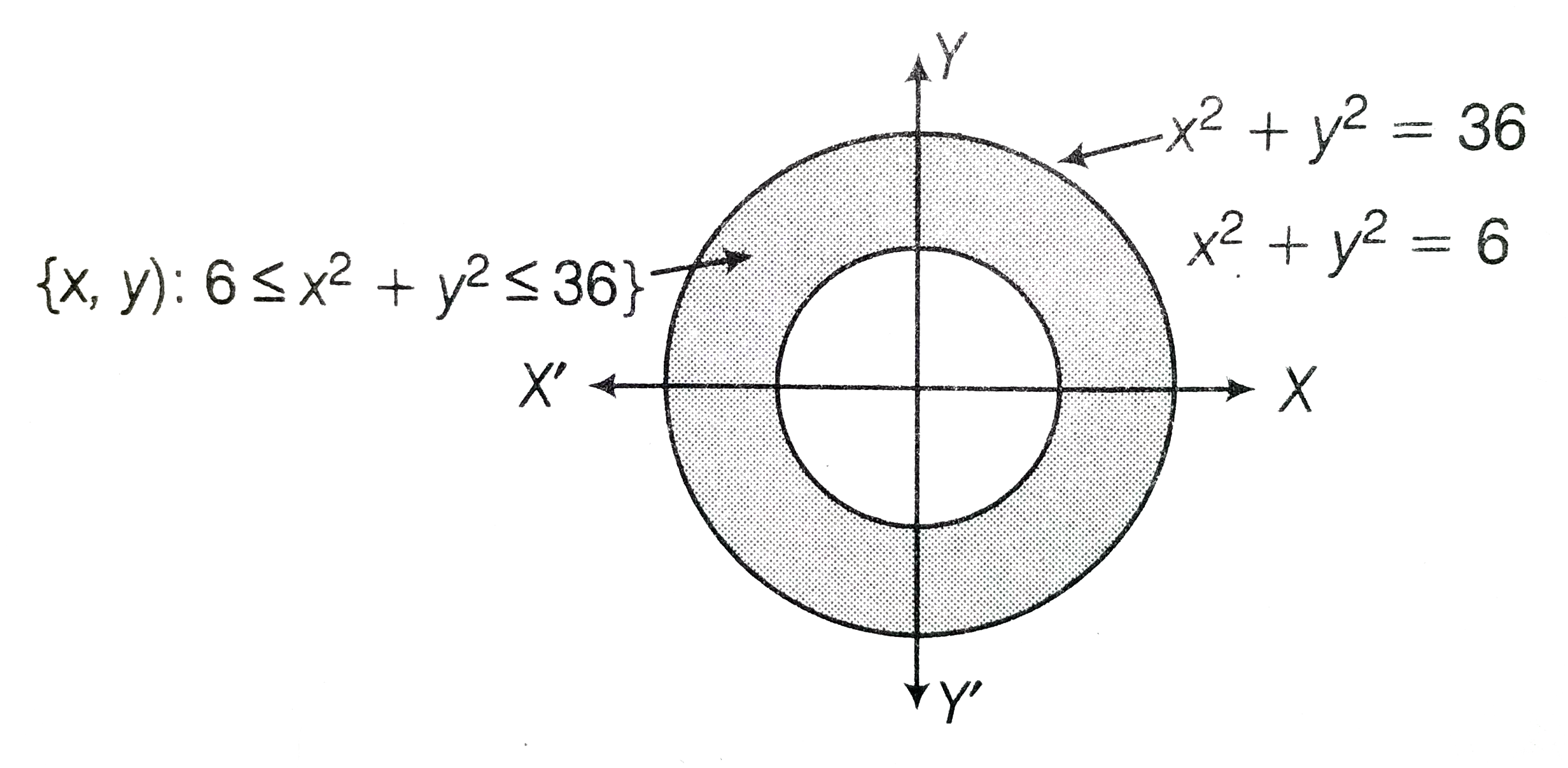Which of the following sets are not convex? A) {(x,y):8x2+6y2≤24} B) {(x,y):6≤x2+y2≤36} C) {(x,y):y≥3,y≥30} D) {(x,y):x2≤y}
{x,y):8x2+6y2≤24}
{(x,y):6≤x2+y2≤36}
{(x,y):y≥3,y≥30}
{(x,y):x2≤y}
The correct Answer is:B
{(x,y):6≤x2+y2≤36}

Form figure (graph ), it is clear that it is not convex .
Topper's Solved these Questions
- BOOK - MHTCET PREVIOUS YEAR PAPERS AND PRACTICE PAPERSCHAPTER - Linear Programming EXERCISE - EXERCISE 1 (TOPICAL PROBLEMS )(Solution of LPP Graphical Method )15videos
Linear Programming
- BOOK - MHTCET PREVIOUS YEAR PAPERS AND PRACTICE PAPERSCHAPTER - Linear Programming EXERCISE - EXERCISE 2 (MISCELLANEOUS PROBLEMS )30videos
Linear Programming
- BOOK - MHTCET PREVIOUS YEAR PAPERS AND PRACTICE PAPERSCHAPTER - LINEEXERCISE - MHT CET Corner3videos
LINE
- BOOK - MHTCET PREVIOUS YEAR PAPERS AND PRACTICE PAPERSCHAPTER - MATHEMATICAL LOGIC EXERCISE - MHT CET CORNER22videos
MATHEMATICAL LOGIC
Similar Questions
Knowledge Check
- Question 1 - Select One
The following are the steps involved in factorizing 64x6−y6. Arrange them in sequential order
(A) {(2x)3+y3}{(2x)3−y3}
(B) (8x3)2−(y3)2
(C) (8x3+y3)(8x3−y3)
(D) (2x+y)(4x2−2xy+y2)(2x−y)(4x2+2xy+y2)ABADCBBDACCBCADDBACD
If x=10 and y=0.1 , which of the following is the greatest? x2+y2 (b) x2−y2 (c) x2 y2 (d) x2y2
View SolutionSolve the following systems of inequation graphically: x+ygeq8,\ x+2ygeq8,\ x+ylt=6
View SolutionSolve the following linear programming problem (L.P.P) graphically Minimize: Z=2x+y subject to constraints 2x+3y≤12;x+y≤5;x≥2;x≥0;y≥0
View Solutiony−1=m1(x−3)andy−3=m2(x−1) are two family of straight lines, at right angled to each other. The locus of their point of intersection is: (A) x2+y2−2x−6y+10=0 (B) x2+y2−4x−4y+6=0 (C) x2+y2−2x−6y+6=0 (D) x2+y2−4x−by−6=0
View SolutionImage of ellipse 4x2+9y2=36 in the line y=x is : (A) 9x2+4y2=36 (B) 3x2+2y2=36 (C) 2x2+3y2=36 (D) none of these
View SolutionIf f:x:−1≤x≤1→{x:−1≤x≤1}, then which is/are bijective
View SolutionThe equation of the circle which inscribes a suqre whose two diagonally opposite vertices are (4,2)and(2,6) respectively is : (A) x2+y2+4x−6y+10=0 (B) x2+y2−6x−8y+20=0 (C) x2+y2−6x+8y+25=0 (D) x2+y2+6x+8y+15=0
View Solution

